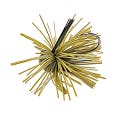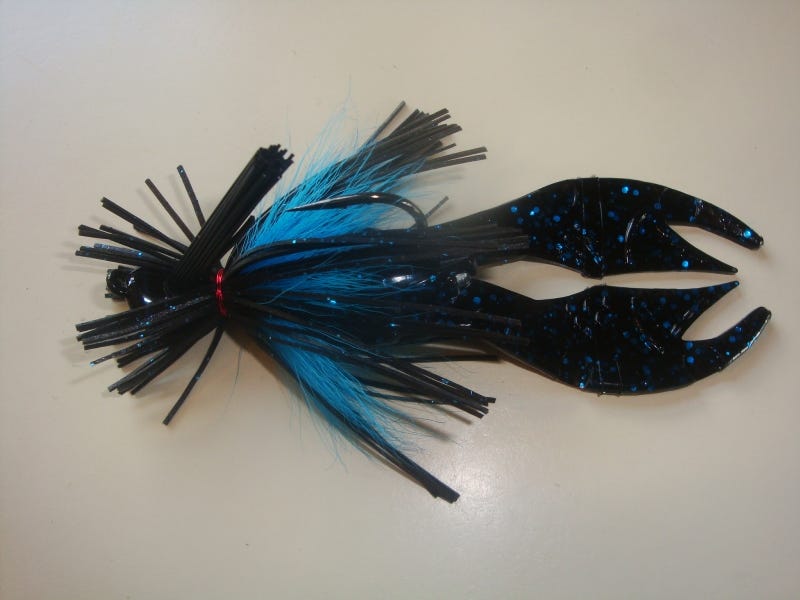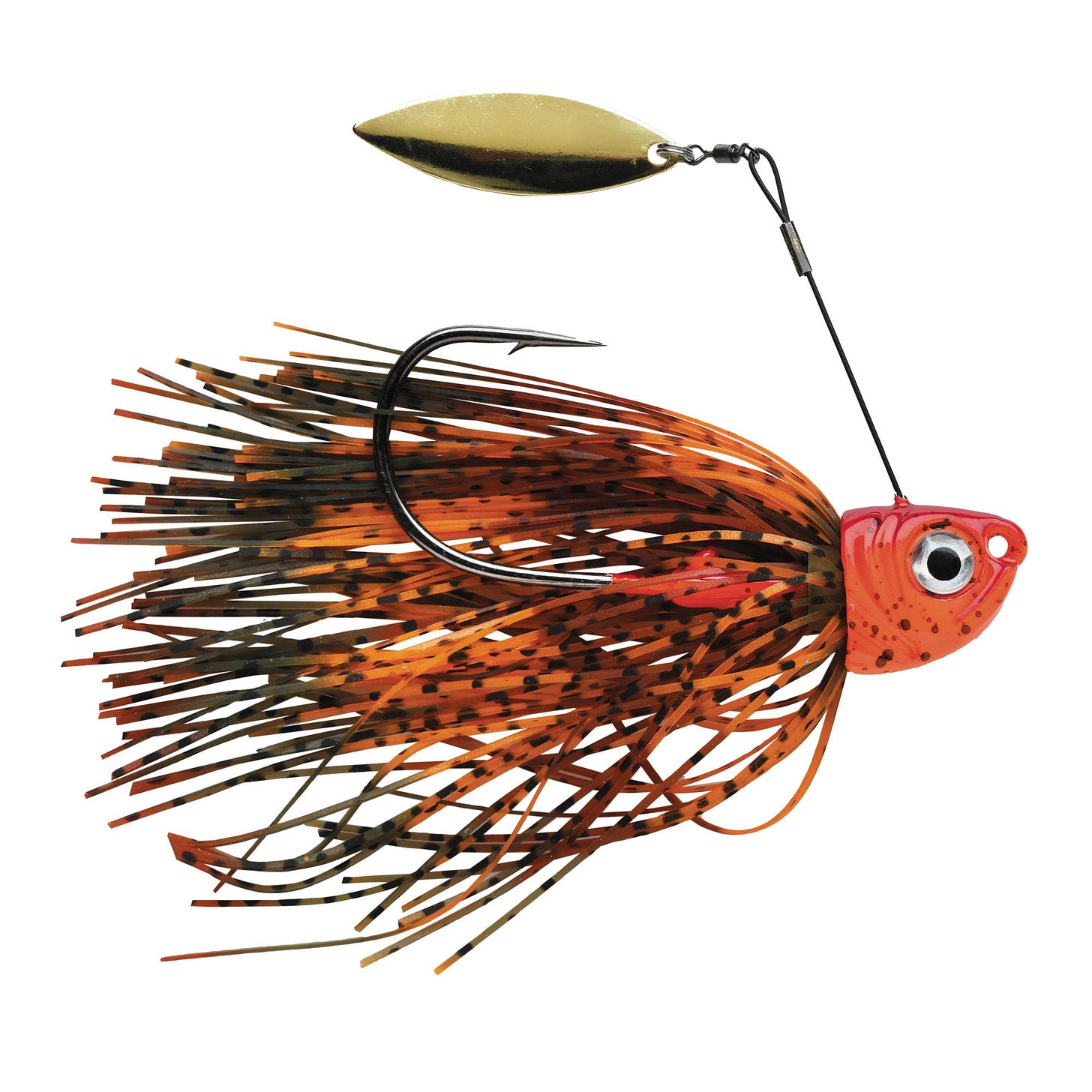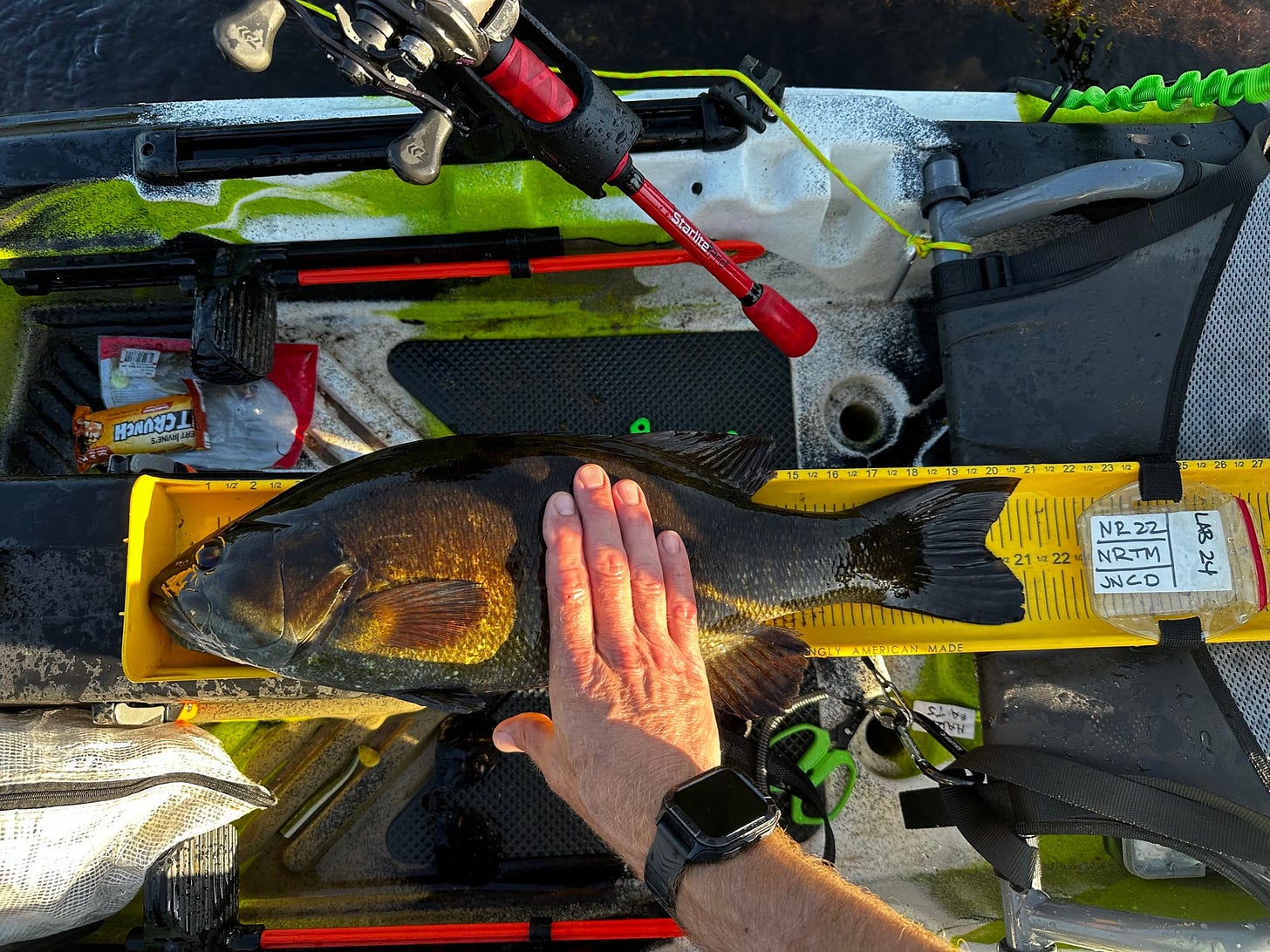When we talk about targeting Smallmouth one of the all time favorite techniques is of course utilizing Jig Fishing techniques. These techniques have evolved over the last few decades with the innovations of bladed jigs or vibrating jigs commonly known as chatterbaits of course but in truth jig fishing has always been more of a bottom centric or relation presentation.
🐟Summer is here! How will we target Smallmouth now?
✨How can Finesse Jigs and Swim Jigs fit into your arsenal this summer?
🎣How can we target summer Smallmouth effectively with either Finesse Jigs or Swim Jigs?
Before such evolutions like the Ned Rig for example, jigs were typically an out of the bag presentation direct from the tackle shop aisle. Of course many would tweak or modify their jigs often times trimming weed guards or skirts but the technique was basically ready for ”cast and catch”. Often these jigs would be predominately crawdad imitators or bottom contact forage specie colorations because the intent was for these presentations to either maintain bottom contact or bounce off the bottom and return. This was always a technique where the action was generated more by the angler and less the actual bait itself hence the “jigging” “jumping” “pitching” “punching” “flipping” etc all actions that begin with the angler not the bait.
Here are some of the most common jig casting techniques:
Cast jig out and let it sink in search of the bottom.
Jerk or Twitch the rod tip up quickly;then let the jig fall back down.
Repeat said motion, varying the distance and direction of the rod movement.
Reel in the line slightly to keep tension in preparation for a strike.
Some tips for jigging include:
Reel in slowly to keep the jig near the bottom or drag along bottom contact.
Always match the weight of a jig to the target depth being targeted.
Remember to consider tides and current into consideration when choosing your jig weight. (Potomac and James River for example are great jig fisheries)
Two Jig Fishing techniques that I want to ficus on here for Smallmouth are Finesse Jigs and Swim Jigs.
Finesse jigs and swim jigs are two different techniques for targeting Smallmouth in river systems during the summer. Each has distinct characteristics, applications, and purposes.
Finesse Jigs
Techniques:
Size and Weight: Finesse jigs are typically smaller and lighter (often 1/8 to 3/8 ounces), designed to present a subtle, less intrusive offering.
Presentation: These jigs are used with light line (6-10 lb test) and spinning tackle, making them ideal for delicate presentations.
Action: The technique often involves slow, methodical movements. Anglers might drag the jig along the bottom, hop it, or use a gentle shaking motion to mimic small prey like crawfish or baitfish.
Cover: They are excellent for fishing around rocky structures, docks, and sparse vegetation where a subtle presentation is key.
Example here: BassDope Lures Candy Finesse Jig
https://tinyurl.com/BassDopeJigs
Purpose:
Target Finicky Fish: Finesse jigs are used when bass are not aggressively feeding or are pressured due to clear water, high fishing pressure, or bright conditions.
Natural Presentation: The smaller profile and subtle action are meant to look more natural, making them effective in clear water where bass can get a good look at the lure.
The depth of the finesse category has expanded in recent years of course. Typical “finesse” style are compact jigs and often lighter on balance than other jigs. The rise and acceptance of the BFS or Bait Finesse System has brought alot more attention to some baits that are often overlooked. To be fair of course I am not really into baitcasters but I get the concept being brought to them that we spinning gear guys have enjoyed forever at least in my opinion.
As you all know I have been using Fitzgerald Rods having given up using iRods now that I fish more from a kayak than a boat anymore but this season I have been experimenting with the Foundation Pro Series from YakRods opting for the Finesse Rod in the three rod foundation series and have been seeing a recognizable difference in my ability to sustain Smallie hook ups. At 7 feet this rod has allowed me to utilize multiple Smallmouth techniques like drop shot, tubes, ned rigs, and even smaller size jerkbaits and spybaits. Some of the guys I fish with have opted for the casting rods and love the Yak Rods specialty offerings that target very specific presentations for them.
https://yakrods.com/collections/the-foundation-spinning-rods
Finesse Jigs are great for summer especially in highly pressured situations because they are smaller and mimic small prey in the river systems that live on the bottom in the river composition. Smallmouth may be inclined not to chase much say right after post spawn and this can be where finesse also thrives.
Example— Thomas Custom Lures—- Black & Blue with Trailer (very popular tidal fishery color and combination in which multiple casting techniques can be utilized) Thomas Custom Lures has an extensive line up of colors as well as other variations in the jig family including the Hair Jigs which are perfect for that New Rig application in the summer as well.
https://thomascustomlures.com/bass.lc
Swim Jigs
Swim jigs feature a pointed nose over a more squared off jighead and a vertical line tie that impacts its movement through the water column so it can swim through the water more smoothly and make its way through cover a bit easier.
The weight transfer of the jig itself is different than most in that the weight of the head is positioned towards the bottom of the jig so to maintain stability and an upright positioning as it “swims”. By its name alone you get the idea that this one is not really for dragging on the bottom rather working through the water just above bottom for event targeting suspended bass.
I have always thought that Pro Randy Howell probably utilized this technique more so than any in a many different situations. This one is certainly not your finesse tactic at least in my opinion and requires us to ditch our light line and shorter light rod set ups regardless of the weight of the jig being thrown. I prefer at minimum a 7 foot rod Medium Heavy for swim jig fishing.
Most of us are familiar with the “burning” of a vibrating jig but for me that all started with the swim jig decades before chatterbaits every went mainstream. The speed of reeling in the swim jig simply attracts strikes and its movement in the water is a bit different than say a Spinnerbait with a the added ability to target far more water column depths.
Techniques:
Size and Weight: Swim jigs are generally heavier (3/8 to 1/2 ounces or more) to allow for a faster and more consistent retrieve through the water column.
Presentation: These jigs are used with medium to heavy tackle and often paired with a trailer to add bulk and swimming action. The retrieve can be straight, with occasional pauses or twitches to imitate fleeing prey.
Action: Swim jigs are designed to be fished more aggressively, often retrieved steadily or with a pumping action to mimic a swimming baitfish.
Cover: They are effective in various types of cover, including grass, wood, and open water, where their swimming action can trigger strikes from active bass.
Untraditional!! ?? The next innovation has arrived……
Innovation in the Swim Jig category the last few years has brought many changes to the jig. One such innovation today is the 1st Gen Fishing FlashX which many at first glance may not categorize as a swim jig but in truth the bait actually captures the very essence of the action and intent of a the old traditional design with a few change ups. The recessed line tie helps the bait make its way smoothly through cover but added feature of a top blade providing “flash” in the water.
https://1stgenfishing.com/product/flashx/
The FlashX should be in everyone’s aresenal if their intention is to utilize Swim Jig techniques to target Smallmouth in many of our river systems. I prefer the Green Pumpkin and the Burnt Craw (above) in most scenarios in the Mid Atlantic region river systems where Rusty, Allegheny, Virile craw etc are forage for Smallmouth. If you are targeting lake or reservoir Smallmouth without craw forage opt for the Shad colorations or my favorite called Spotlight.
Purpose:
Covering Water: Swim jigs allow anglers to cover a lot of water quickly, making them ideal for locating active fish.
Imitating Baitfish: The swimming action and the addition of a trailer create a profile and movement that closely resembles baitfish, which are a primary food source for smallmouth bass in the summer.
Versatility: They can be used in multiple situations, from shallow flats to deeper edges of weed beds or rock piles.
Key Differences
Profile and Size: Finesse jigs have a smaller, subtler profile compared to the bulkier swim jigs.
Retrieve Speed: Finesse jigs are fished slowly and methodically, while swim jigs are fished more quickly with a swimming action.
Line and Tackle: Finesse jigs require lighter line and spinning tackle for a delicate presentation, whereas swim jigs use heavier line and casting tackle for a more aggressive approach.
Fishing Conditions: Finesse jigs excel in clear water and high-pressure situations, while swim jigs are better suited for covering water and targeting active fish in various cover types.
By understanding these differences, anglers can select the appropriate technique based on the conditions and behavior of the Smallmouth, increasing their chances of success during summer fishing in river systems.
New River Smallie- Finesse Fishing Jigs Summer Fishing caught 93 temps with water levels at less than two feet!!
⭐⭐
If you enjoyed this please consider being a FREE SUBSCRIBER and JOINING THE CHASE as we learn to understand SMALLMOUTH more on this journey!
Subscribe!!
Subscribe TODAY for FREE and then this summer JOIN the Premium Newsletter which will not only provide more in depth analysis but also locations for quality Smallmouth fishing and how to target them with the right bait presentations while also DELIVERING (1) BAIT per month to SUBSCRIBERS right to their door to fish with on their next river trip!!
Resources:
Facebook Groups:
Smallmouth Army:
https://www.facebook.com/groups/1322144201945490
Smallie Chaser River Bassin:
https://www.facebook.com/groups/885248796934955







